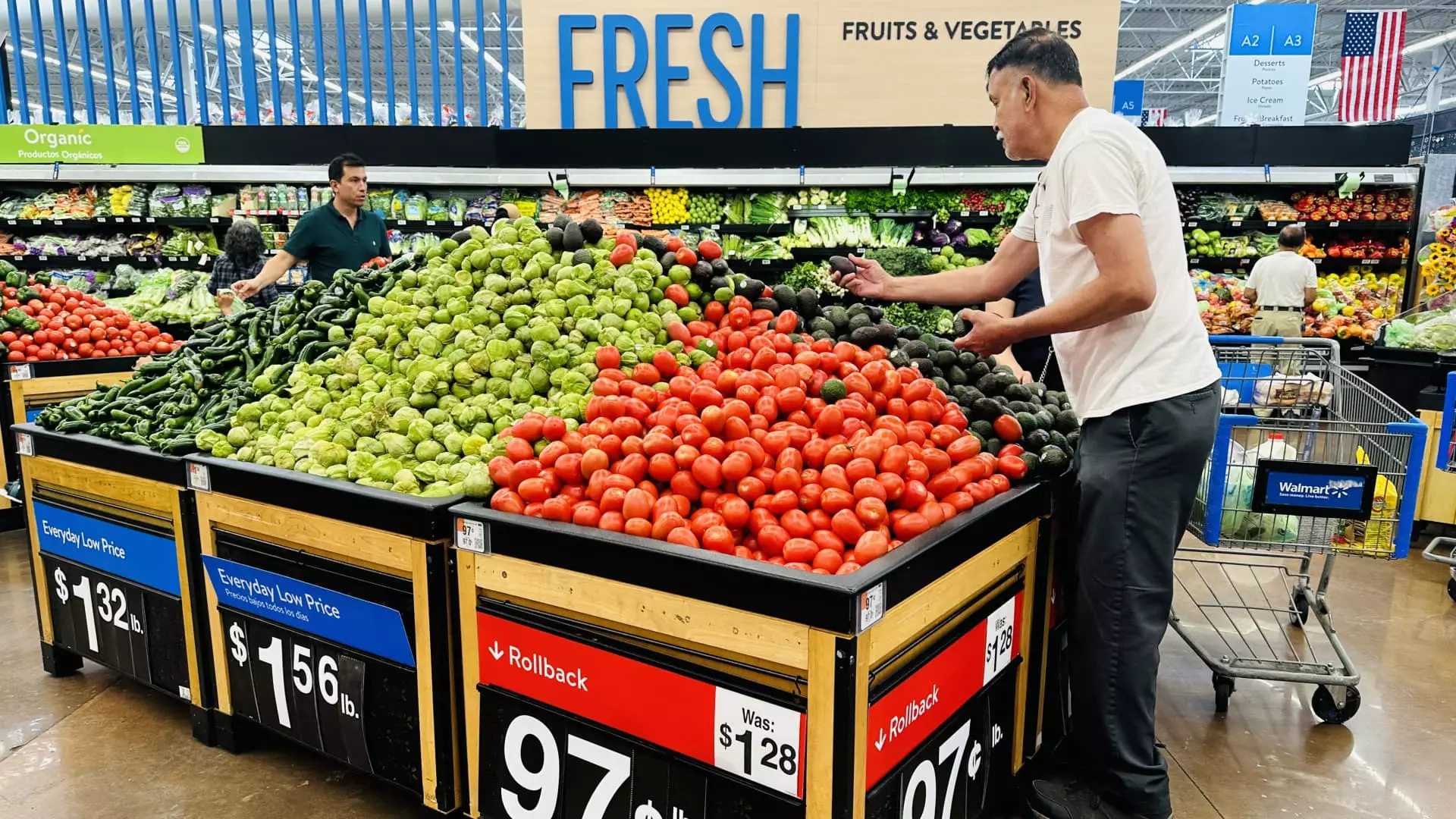In a world where consumers have become accustomed to the idea of bargains and relentless discounting, the recent warnings from Walmart’s Chief Financial Officer, John David Rainey, serve as a crucial wake-up call. The retail colossus, known for its commitment to maintaining low prices, is bracing for a wave of price hikes due to escalating tariffs. This is a blatant reminder that even the most dominant market players are at the mercy of unpredictable geopolitical tensions and changes in domestic and international trade policy. As much as companies like Walmart try to absorb increases in costs, the hard truth is that consumers will ultimately bear the brunt.
The implication of Rainey’s statement isn’t merely theoretical; it foreshadows a future where everyday staples, not just luxury items, will be burdened by higher prices. This is particularly alarming for families that already struggle to make ends meet. As prices are expected to soar toward the summer, it raises questions about consumer behavior and economic resilience in the face of adversity. Consumers will need a strategy to navigate this new landscape, and being reactive will only serve to exacerbate the financial strain.
Market Fluctuations and Their Impact on Consumer Behavior
The burden of tariffs imposed on goods imported from numerous countries including China, Vietnam, and Mexico will force retailers like Walmart to make tough decisions. When consumers see price increases, their purchasing habits often shift. Early purchases of large-ticket items become prevalent as shoppers try to avoid potential spikes. Consequently, this behavior could result in a temporary boost for retail sales during the initial period of price uncertainty, but it is not sustainable.
What happens when consumers balk at rising prices? A hesitance to spend—especially on non-essential items—could accompany elevated pricing. This paradox highlights the delicate balance that retailers must maintain; striking the right chord between maintaining edge and mitigating risk is crucial. Walmart, for example, has expressed its intention to adapt by cutting orders of items expected to face hefty tariff increases. While this might seem prudent, it also hints that cuts in supply could lead to shortages, further inflating prices and alienating customers.
Walmart’s Not-so-Secret Weapon: Market Share
Interestingly, even as prices vaporize consumer confidence, Walmart’s leadership remains undeterred about its sales forecasts. Rainey theorizes that tougher economic conditions can provide the retail giant an opportunity to capture greater market share. This notion personifies the will to survive in a competition-ridden marketplace. However, one must critically examine the ethical implications of profiting amidst economic distress. Is taking advantage of unhappy consumers really a sustainable business model?
Moreover, Walmart’s pragmatic adjustments—such as shifting from aluminum to fiberglass in its product lines—indicate that flexibility isn’t merely a luxury; it’s a necessity for survival. Nevertheless, it raises pressing questions about product quality and consumer choice. Will the allure of lower prices continue to overshadow potential compromises in product integrity? It is a delicate, slippery slope.
The Broader Economic Implications
The cascading effects of Walmart’s price inflation will undoubtedly ripple through the economy. Other retailers will likely follow suit, and as one of America’s largest employers, Walmart’s decisions have a substantial impact on broader employment and income levels. For consumers, this may mean revisiting budgets, but it could also lead to increased disillusionment with larger economic structures that seem beyond their control.
Additionally, the government’s role in implementing tariffs creates an interesting dynamic. These levies are often painted as protective measures aimed at fostering domestic industries. However, the reality is that they frequently lead to inflated prices for end consumers and fuel inflationary pressures overall. It becomes unclear whether the government’s targeted economic strategies are beneficial or detrimental for the average American family, which is left to grapple with the costs.
Tariff-driven price hikes at Walmart serve as a broader warning signal, underscoring the intersection of economic policy, consumer behavior, and retail strategies. While corporate giants may employ sophisticated measures to navigate these turbulent waters, the real impact is felt individually by consumers, who must brace for a new reality defined by rising costs and cautious spending.

